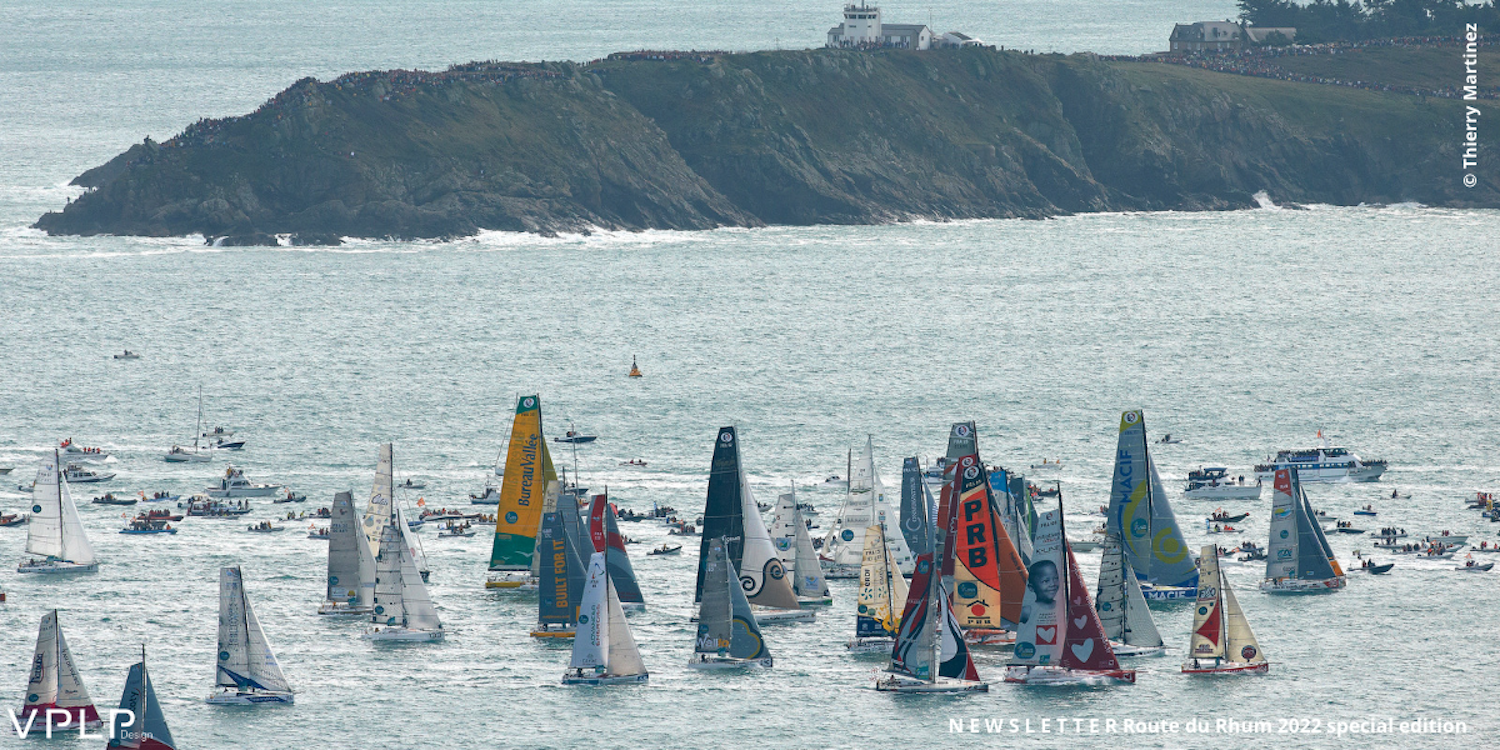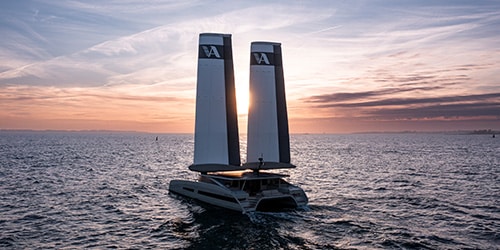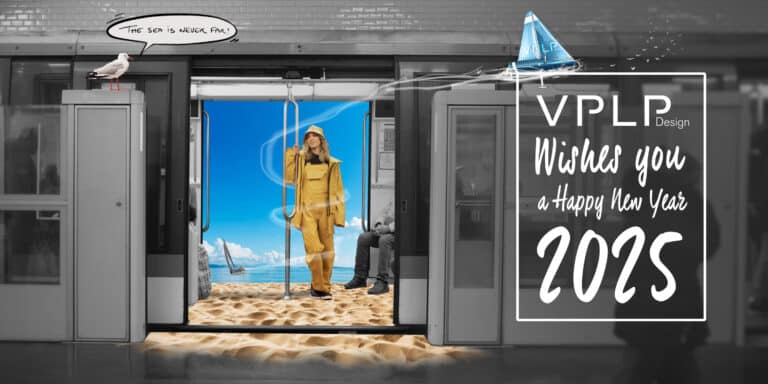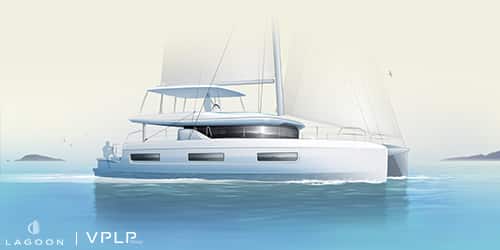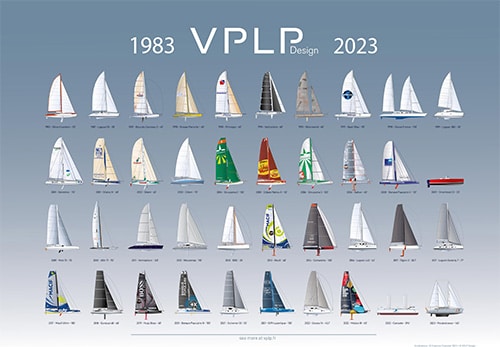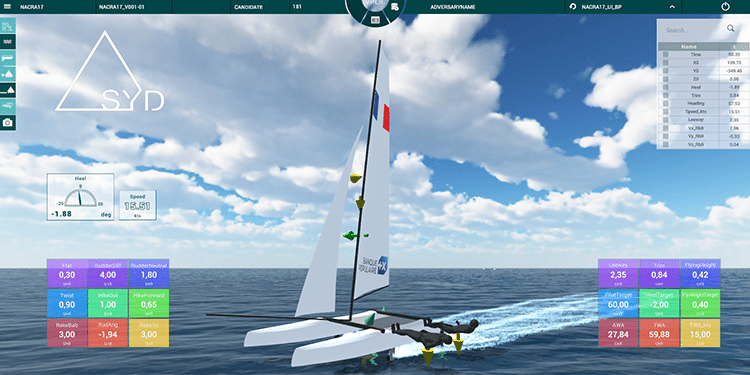THE ROUTE DU RHUM, A MULTIPLE STAKES RACE
The 12th edition of the Route du Rhum – Destination Guadeloupe gets underway on 6 November with a record 138 solo skippers taking the starting line. Naval architecture firm VPLP Design, for whom the quadrennial solo transatlantic race is of huge importance, has designed twenty-nine* of the competing boats.
With a total of 138 solo competitors, 1.5 million spectators expected to visit Saint Malo, and 1,000 accredited journalists, the Route du Rhum-Destination Guadeloupe is, every four years, one of the major sporting events. The Route du Rhum is a massively influential sounding board for all its stakeholders. “The event attracts enormous attention from the media. For us, it’s a unique opportunity to present our boats to the general public, to the press, and to potential customers. The stakes being very high across the board, we tend to put a little pressure on ourselves,” says partner architect Xavier Guilbaud, who has worked notably on the Ultims SVR Lazartigue and Banque Populaire XI, both podium contenders for Pointe à Pitre.
Since 1990 and the victory of Pierre 1er, skippered by Florence Arthaud, VPLP Design has enjoyed consistent success in the large multihull class with victories for the ORMAs Primagaz (Laurent Bourgnon, 1994 and 1998), Géant (Michel Desjoyeaux, 2002) and Gitana 11 (Lionel Lemonchois, 2006), and then the same Ultim three times in a row, under the names of Groupama 3 (Franck Cammas, 2010), Banque Populaire VII (Loïck Peyron) and Idec Sport (Francis Joyon). So many multihulls designed by VPLP!
“When one of our boats comes in first at Pointe à Pitre, it’s always a welcome endorsement for the team. Having a list of winners to your credit is always reassuring for the sponsors you’re showing your designs to,” says Vincent Lauriot Prévost, co-founder of VPLP Design. He also recalls the catastrophic 2002 edition when only three of the eighteen contending ORMAs managed to reach the finishing line. It was a very difficult experience (see below). “Even though a VPLP designed boat came in first at Pointe à Pitre [Michel Desjoyeaux’s Géant], we had to deal with a lot of questions without not necessarily having any answers.”
Increasing competition in the IMOCA class
Since then we have continued to see “our” boats win in other classes, both in the Ocean Fifty (2006 and 2014) and the IMOCA (2014 and 2018, designed in collaboration with Guillaume Verdier). Competition in the IMOCA category has intensified considerably in recent years. “Compared to the multihulls, where we’re usually two or three designers, the competition has changed perceptibly,” says Vincent Lauriot Prévost. “Not necessarily in terms of numbers, but more in the sense of a single architect dominating the field. There have been the Finot-Conq years, followed by the Farr years, and then our successes with Guillaume. The best teams tended to work with the same firm of architects. Today the field is wide open and the choice of architects has become more diverse.”
Quentin Lucet, partner architect, who worked on Boris Herrmann’s latest Malizia-Seaexplorer, has this to say: “It’s stimulating. The more competitors you have, the more you ask yourself questions, the more you try to understand how the other architecture firms tackle the same issues. It’s very interesting to observe that clearly we don’t find the same solutions.”
With seven of the thirty-eight IMOCAs being brand new, will the 12th edition of the Route du Rhum-Destination Guadeloupe provide some answers for the latest generation of this class? “Certainly there’s plenty of expectation riding on this class. We learned lessons from the last Vendée Globe which we put to good use in the ongoing development of the design,” says Quentin Lucet. “Nevertheless the main goal of these boats remains the Vendée Globe. On the Route du Rhum we rarely see the conditions you get on the Vendée Globe, especially the sea states, so we won’t necessarily have all the answers.” Vincent Lauriot Prévost says: “The moment of truth will more likely be The Ocean Race.” He references, of course, the round-the-world race starting next January which Malizia-Seaexplorer will be competing in.
Class40 Newcomer
In the Ultim class, this Route du Rhum also has its fair share of unknowns. “The main thing is to know if we’ve managed to make boats that the skipper can exploit, and to what degree,” says Quentin Lucet. Xavier Guilbaud says: “Above all it’s the guy’s capacity to drive the boat that counts. A boat that is better prepared and easier to use in terms of the deck plan, reducing physical effort and chafing, can make the difference.” Vincent Lauriot Prévost, on the other hand, highlights the question of skipper protection and this has been a priority of the firm’s recent designs. “I believe that the least tired will surely have an advantage over the skippers who are more exposed to the elements. François Gabart’s boat has this advantage, as does Koesio, Erwan Le Roux’s Ocean Fifty.”
The performance of the newest Ocean Fifty will be carefully scrutinized by the firm. “It’s clear that there is a lot at stake for us in this class, because quite a few sailors are knocking at the door. Everyone will be looking at the results of the Route du Rhum with great interest, and it could lead to one or two projects for us,” says Xavier Guilbaud.
The same goes for the Class40 too. VPLP is a newcomer to the class and our participation is modest with four boats to cross the starting line. “We’re not there to defend a position; rather we are trying to make a place for ourselves,” says Vincent Lauriot Prévost. “I don’t see us among the favourites, even if I think that some of them could make a play for the top five. It’s true that this Route du Rhum has the potential to influence the continuation of the project. It all depends on the skippers at the finishing line, their satisfaction and what they say about their boats.”
Look out for the verdict around mid-November!
(*) Of these twenty-nine boats, ten IMOCAs were designed in collaboration with Guillaume Verdier.
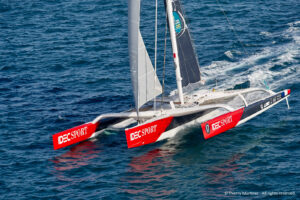
VPLP AND THE ROUTE DU RHUM
1986: First boats designed by VPLP Design to take part in a solo transatlantic race, with Poulain, 23-metre trimaran skippered by Olivier de Kersauson, and Calcialiment-Laiterie du Mont-Saint-Michel, formerly Gérard Lambert and the first boat to be designed by the firm (1983), helmed by Olivier Moussy. Both boats are forced to retire from the race.
8: The number of consecutive wins in the large trimaran class for a boat designed by VPLP Design. After the inaugural success of Pierre 1er in 1990 (Florence Arthaud), came wins for the ORMAs Primagaz (Laurent Bourgnon, 1994 and 1998), Géant (Michel Desjoyeaux, 2002) and Gitana 11 (Lionel Lemonchois, 2006) and then the same Ultim three times in a row, under the names of Groupama 3 (Franck Cammas, 2010), Banque Populaire VII (Loïck Peyron) and Idec Sport (Francis Joyon).
1998: First big multihull hat trick for the firm with the top three spots on the podium in the ORMA class going to winner Laurent Bourgnon (Primagaz), runner-up Alain Gautier (Brocéliande) and third place Franck Cammas (Groupama). Since then VPLP has scored two more: 2014 (Loïck Peyron/Banque Populaire VII, Yann Guichard/Spindrift 2 and Sébastien Josse/Gitana XV) and 2018 (Francis Joyon/Idec Sport, François Gabart/Macif and Thomas Coville/Sodebo Ultim’).
2: Number of VPLP Design victories in the 50’ multihull class, now Ocean Fifty, with Crêpes Whaou! 2 in 2006 (Franck-Yves Escoffier) and FenêtréA-Cardinal (Erwan Le Roux) in 2014. Also, two victories in the IMOCA class in 2014 and 2018 with the same boat, designed in collaboration with Guillaume Verdier, initially named Macif (François Gabart) and subsequently SMA (Paul Meilhat).
29: Number of boats designed by VPLP Design (some in collaboration with other architects) lining up for the 2022 edition, comprising 5 Ultims, 4 Ocean Fiftys, 14 IMOCAs (including 10 with Guillaume Verdier), 4 Class40s, and 2 Rhum Multis. The firm is represented in five of the six race categories.
67: Age of Philippe Poupon, winner of the 1986 edition, who is returning this year in the Rhum Multi category with Flo, formerly Pierre 1er, in homage to Florence Arthaud.12.18: Length in metres of the Class40s, the smallest boats entering the Route du Rhum. The Ultims are the largest boats at 32 metres long.7 days 14 hours 21 minutes 47 seconds: Record to beat for the passage Saint Malo to Pointe à Pitre (3,543 nautical miles or 6,552 km), held by Idec Sport since 2018. For comparison, the winning time of the first edition forty years ago was 23 days and 7 hours, set by Mike Birch on Olympus.
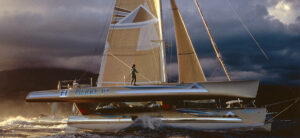
Marc Van Peteghem: 1990
“I was very good friends with Florence Arthaud. I recall one night spent talking. We must have been about 19. She was in her first year of medical school, while I was doing maths and aiming for a place in a Grande École. She told me she wanted to give it up and focus on the sea and sailing. As for me, I was thinking about leaving for England to attend a naval architecture school. She said to me then that it would be great if one day I could design her a boat. It was one of those wonderful things you say when you’re a kid, except that it actually came to pass quite a few years later with Pierre 1er, which she sailed in the 1990 Route du Rhum. That boat was very important for Vincent [Lauriot Prévost] and me. Between designing it and the subsequent developments with Florence, it really was magical. And the finish in Guadeloupe was an incredible emotional shock. We were out on the water with Florence’s family, with whom we remain very close, and all of us can picture that moment with the sun reflecting off the gold-coloured float. It was an instant which marked me both professionally and personally.”
Vincent Lauriot Prévost: 2002
“The 2002 edition was the most intense I ever experienced, something happened every single day. The preparations were complicated because many boats had been built at the same time [ORMA trimarans], and there wasn’t any time to test or tweak them. For example, Michel Desjoyeaux launched Géant in July and then dismasted on his first outing. Next, I hadn’t even managed to get home from watching the start at Saint Malo when I got a phone call telling me that Groupama was upside down and had been hit by Bonduelle! And it didn’t stop the following morning, either… You need to understand that, back then, the technical teams were smaller than they are today and they relied on us much more. The same went for the journalists, who wanted to understand the disaster [15 of the 18 boats competing didn’t reach the finishing line]. It was very unusual. And right up until the end, because 48 hours before the finish, Steve Ravussin on Alain Gautier’s old Brocéliande, which we had designed, capsized while leading the race. Fortunately Michel [Desjoyeaux] provided us with some solace by arriving first, but it really was a very gruelling edition.”
Quentin Lucet: 2002
“I was born in 1978, the year of the first edition of the Route du Rhum. It’s a nice coincidence because the race has always been part of my career. During the 2002 edition I was studying naval architecture at Southampton. I pitched up at Marc Guillemeot’s door and asked him if I could do some work experience. He was skippering the ORMA Biscuits La Trinitaine at the time. I did a bit of everything, preparing, gel coating, and I decided to invest in a plane ticket to see the boats arrive in Port à Pitre. It was an emotional moment because Marc was one of the three that actually completed the race [he was runner-up to Michel Desjoyeaux and arrived ahead of Lalou Roucayrol]. It was there in Guadeloupe that I met Vincent Lauriot Prévost for the first time. For the student that I was, he was a bit of a legend and I was very intimidated. We just clinked our glasses and exchanged a few words, but it was undoubtedly that chance meeting which led to me working for VPLP. Several years later, in 2006, Vincent called me to see if I was interested in working with him on the firm’s first IMOCA, in collaboration with Guillaume Verdier.”
Xavier Guilbaud: 2018
“I was very involved in this edition because I was the lead architect for Macif and Banque Populaire IX. Armel’s capsizing was an awful experience, frightening. We could see that he had stopped moving forward, but we didn’t have any news. After an hour or two we learned that the boat had turned turtle but not much else until somebody told us that they had recovered Armel, which was a huge relief! It was only a material loss but it was nevertheless traumatizing. It’s awful to see the sinking of a boat that you spent three years of your life working on. With hindsight, there are plenty of positives. Even if the damage was done by an unidentified floating object, we still managed to get all the teams and architects to the table and go through the whole incident. And we were able to bounce back thanks to sponsors Banque Populaire who signed up for another boat. But that Route du Rhum didn’t finish with Armel’s capsizing! We thought that François [Gabart] had it in the bag until Francis [Joyon] pulled off the upset, charging up from behind and pipping François to the post. We had mixed feelings at the finishing line. We were all really satisfied with how it turned out at the finishing line, with Francis’s victory and a third win for the boat, and the fine runner-up in Macif despite the latter having been disadvantaged for much of the race.”
